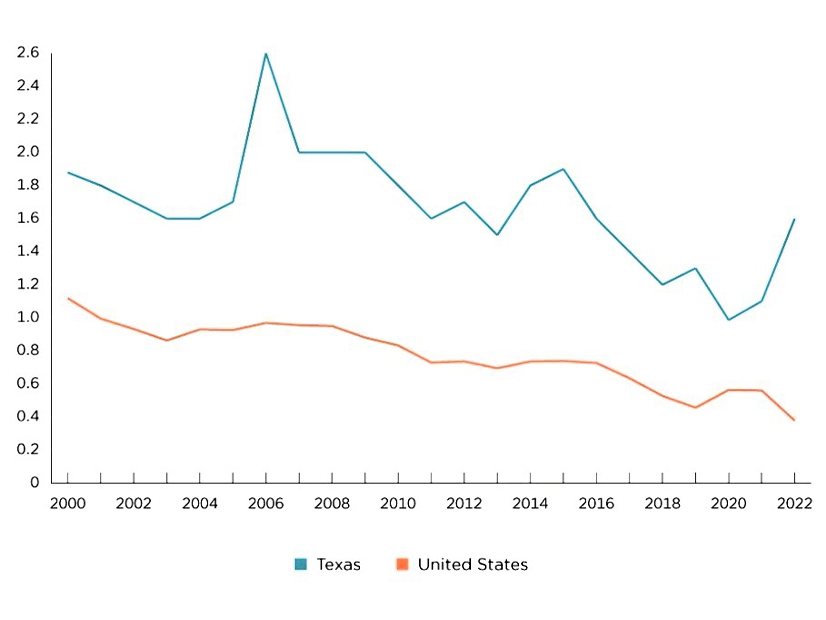
At some point last year Texas welcomed its 30 millionth resident, making it only the second state to reach that milestone behind California with its population of 39 million.
The U.S. Census Bureau said earlier this year that Texas added more than 9 million residents from 2000 to 2020, a 43% increase and more than any other state, and almost 3 million more than Florida, the next largest-growing state. The Bureau said Texas is the fourth-fastest growing state, with 11 of its 254 counties more than doubling their population during that same period.
ERCOT’s load growth has also exploded during that time. Peak demand, which was 57.61 GW in 2000, hit 85.44 GW this summer, a 48% increase.
The grid operator’s Independent Market Monitor says that average load grew 9.5% from 2021 to last year, with average load increasing more than the peak load in all four weather zones.
“That really is a massive load growth,” Carrie Bivens, the IMM’s director, said Wednesday while reviewing the monitor’s 2022 State of the Market report during a Gulf Coast Power Association webinar.
Bivens said ERCOT’s West and South zones were the biggest drivers of that growth.
“A lot of that has to do with greater industrial activity and oil and gas exploration, as well as just population growth,” she said. “There’s a lot of people who are moving to Texas, and that’s increasing the load.”
ERCOT says it has set 10 peak demand records this summer, one of the most brutal in recent memory. It set 11 records last summer, the high coming in July when it exceeded 80 GW for the first time at 80.15 GW. That broke the previous record of 74.82 GW that had stood since 2019.
Average peak demand has surpassed 80 GW 156 times this summer, bettering last year’s peak 146 times. A cool front slightly lowered temperatures that resulted in a peak Tuesday of 79.98 GW, the first time ERCOT has seen a peak below 80 GW since July 29.
The ISO, having already issued the year’s fourth weather watch that has been extended twice into Friday, took it a step further Thursday by calling for voluntary conservation. It asked Texans to reduce their electricity usage until 8 p.m. “if safe to do so,” alluding to the return of extreme temperatures, forecasted high demand and lower reserves.
The grid operator said it was not experiencing emergency conditions. “Voluntary conservation is a widely used industry tool that can help lower demand for a specific period of peak demand time,” it said.
ERCOT’s cushion of operating reserves dipped below 5 GW as demand approached 85 GW during the afternoon. About 6 GW of thermal resources were offline. Just before 5:30 p.m., solar resources, the workhorse resource during afternoons this summer, were providing nearly 11 GW of energy, almost as much as the 12.2 GW from coal and lignite units.
Bivens said about 9.7 GW of new generation resources came online last year. Wind accounted for 4 GW and solar for 3 GW; another 1.7 GW of energy storage resources also came online, with gas providing the rest.



